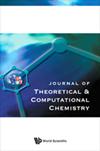非牛顿纳米材料耗散流中具有活化能的二元化学反应
IF 2.4
Q3 Computer Science
Journal of Theoretical & Computational Chemistry
Pub Date : 2020-05-01
DOI:10.1142/s0219633620400064
引用次数: 69
摘要
本文研究了非牛顿(jeffrey流体)磁纳米材料向弯曲拉伸表面流动的熵优化和热传输。mhd流体被计算在内。在布朗扩散、焦耳(欧姆)加热、热泳和粘性耗散的条件下,建立了能量表达式的模型。利用流体摩擦不可逆性、传质不可逆性,焦耳热不可逆性和传热不可逆性讨论了总熵率。进一步考虑了活化能最小的二元化学反应。采用内射法求解了考虑流体动力学、热辐射、传热传质影响的杰弗里流体的控制方程。通过各种图形对熵率、速度场、浓度、贝扬数、表面摩擦系数和温度等流量变量进行了物理讨论。结果表明,熵率随曲率参数的增大而增大。这样获得的结果有助于机械和工业工程科学。此外,还注意到速度和温度随弛豫与延迟时间之比的衰减。本文章由计算机程序翻译,如有差异,请以英文原文为准。
Binary chemical reaction with activation energy in dissipative flow of non-Newtonian nanomaterial
this paper deals with the entropy optimization and heat transport of magneto-nanomaterial flow of non-newtonian (jeffrey fluid) towards a curved stretched surface. mhd fluid is accounted. the modeling of energy expression is developed subject to brownian diffusion , joule (ohmic) heating, thermophoresis and viscous dissipation . total entropy rate is discussed with the help of fluid friction irreversibility, mass transfer irreversibility, joule heating irreversibility and heat transfer irreversibility. binary chemical reaction with the smallest amount of activation energy is further considered. the governing equations of jeffrey fluid with effects of hydrodynamic, thermal radiation , heat and mass transfer were solved through built-in- shooting method . the flow variables on the entropy rate, velocity field , concentration, bejan number, skin friction coefficient and temperature are physically discussed through various graphs. the outcomes reveal that the entropy rate increases with an enhancement in curvature parameter. such obtained outcomes help in mechanical and industrial engineering sciences. moreover, the velocity and temperature decays versus ratio of relaxation to retardation times are also noticed.
求助全文
通过发布文献求助,成功后即可免费获取论文全文。
去求助
来源期刊
CiteScore
1.70
自引率
0.00%
发文量
0
审稿时长
3 months
期刊介绍:
The Journal of Theoretical and Computational Chemistry (JTCC) is an international interdisciplinary journal aimed at providing comprehensive coverage on the latest developments and applications of research in the ever-expanding field of theoretical and computational chemistry.
JTCC publishes regular articles and reviews on new methodology, software, web server and database developments. The applications of existing theoretical and computational methods which produce significant new insights into important problems are also welcomed. Papers reporting joint computational and experimental investigations are encouraged. The journal will not consider manuscripts reporting straightforward calculations of the properties of molecules with existing software packages without addressing a significant scientific problem.
Areas covered by the journal include molecular dynamics, computer-aided molecular design, modeling effects of mutation on stability and dynamics of macromolecules, quantum mechanics, statistical mechanics and other related topics.

 求助内容:
求助内容: 应助结果提醒方式:
应助结果提醒方式:


